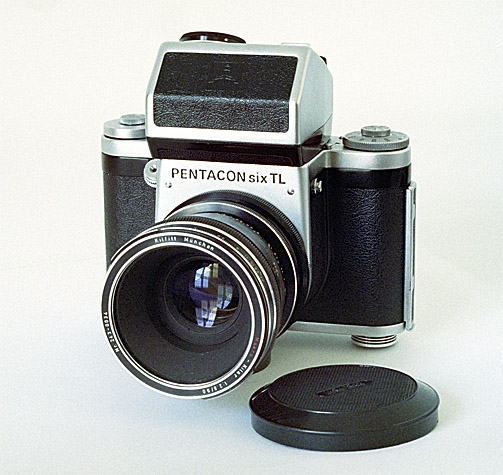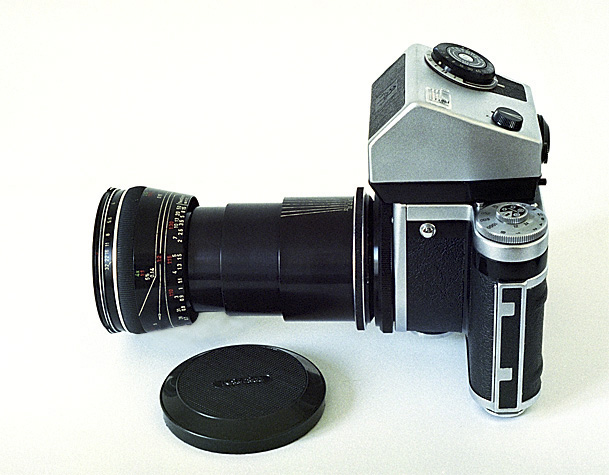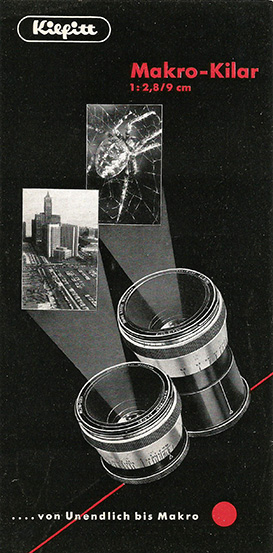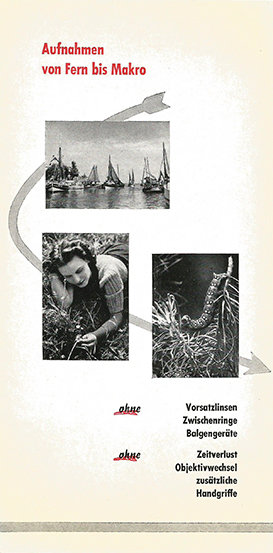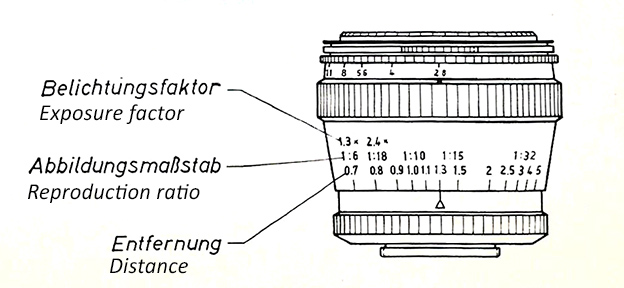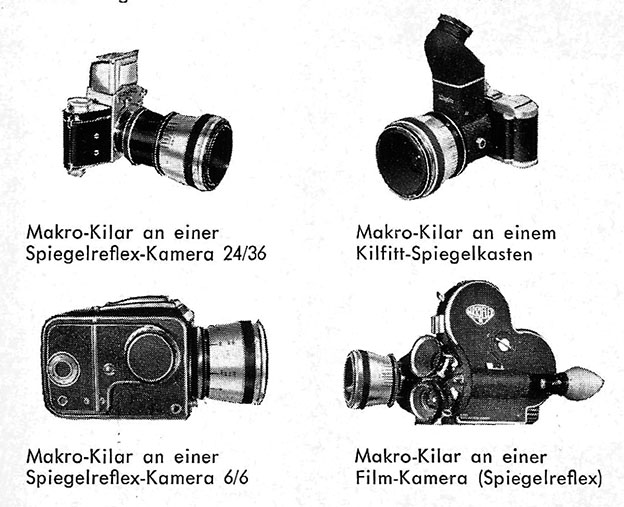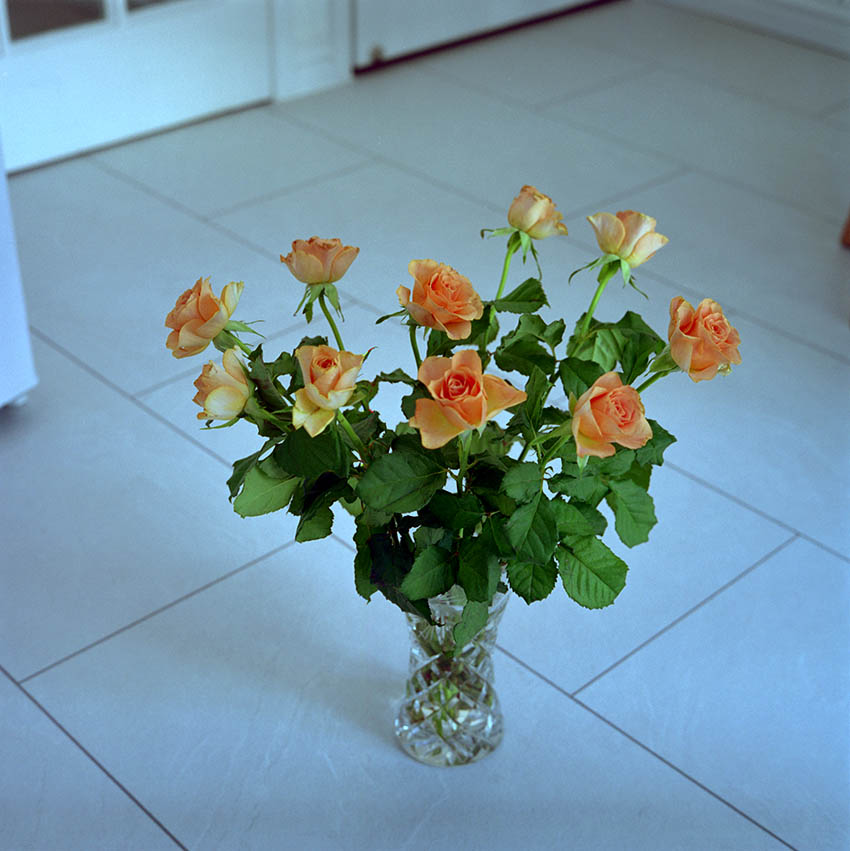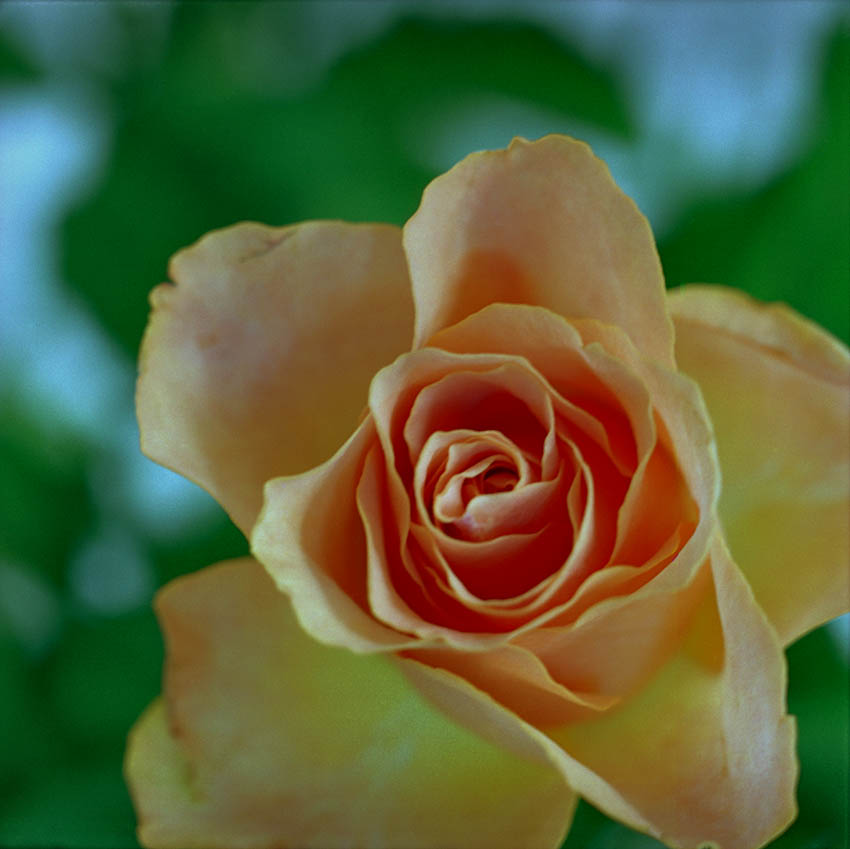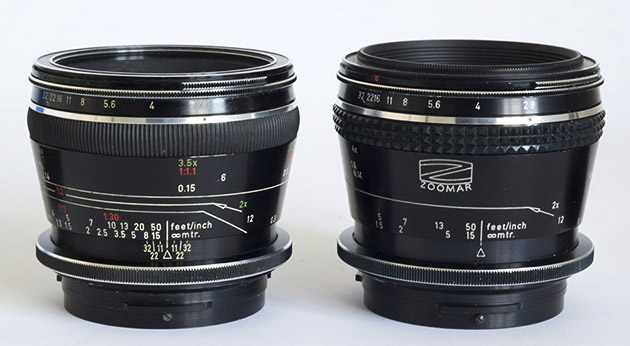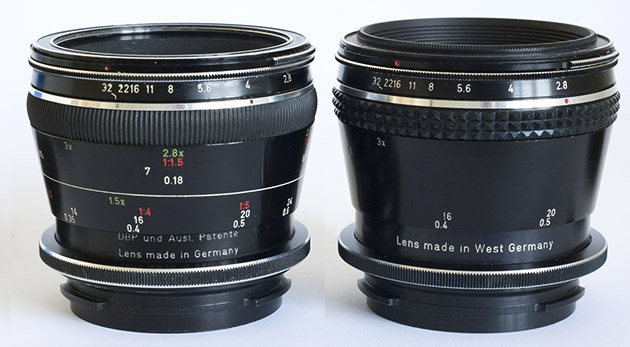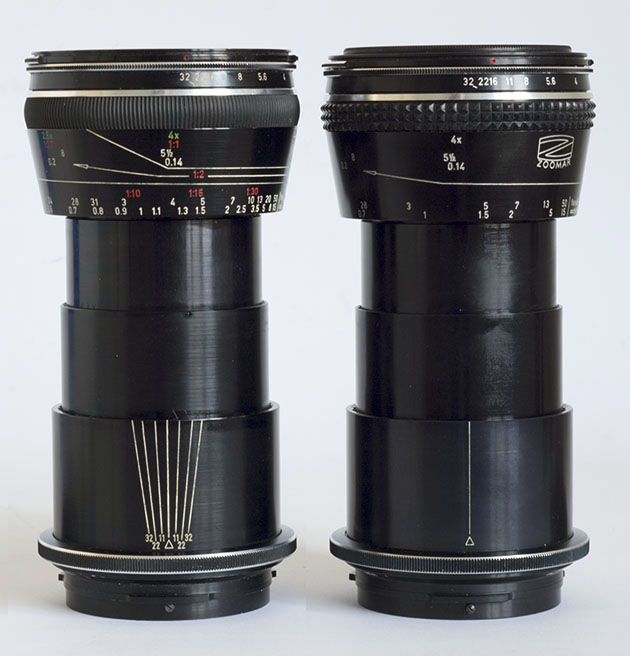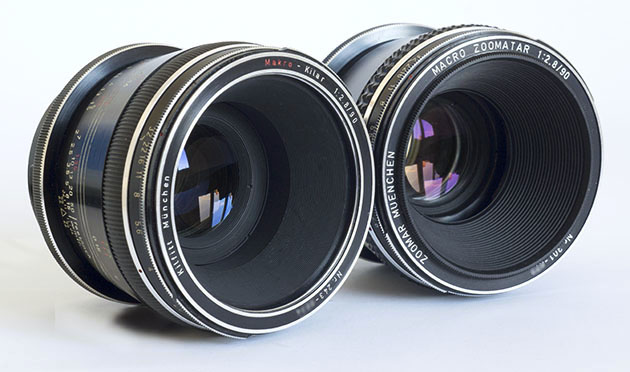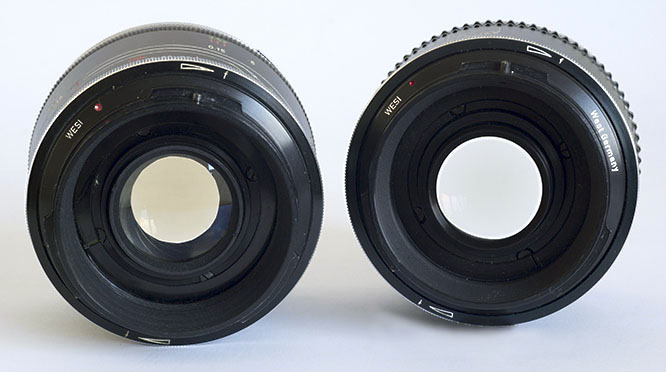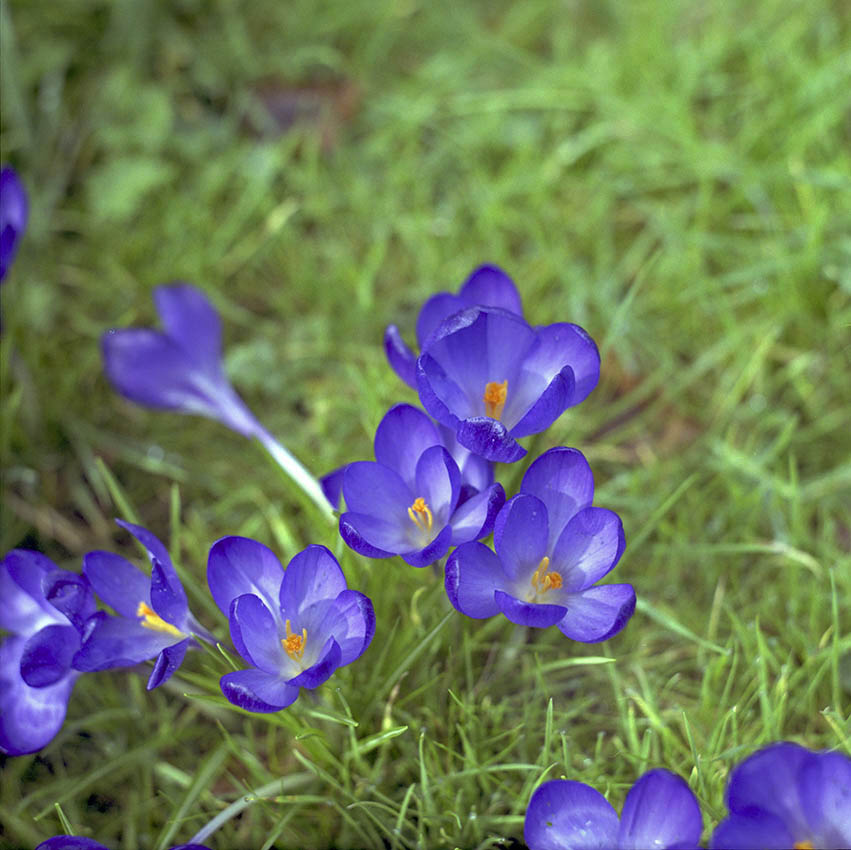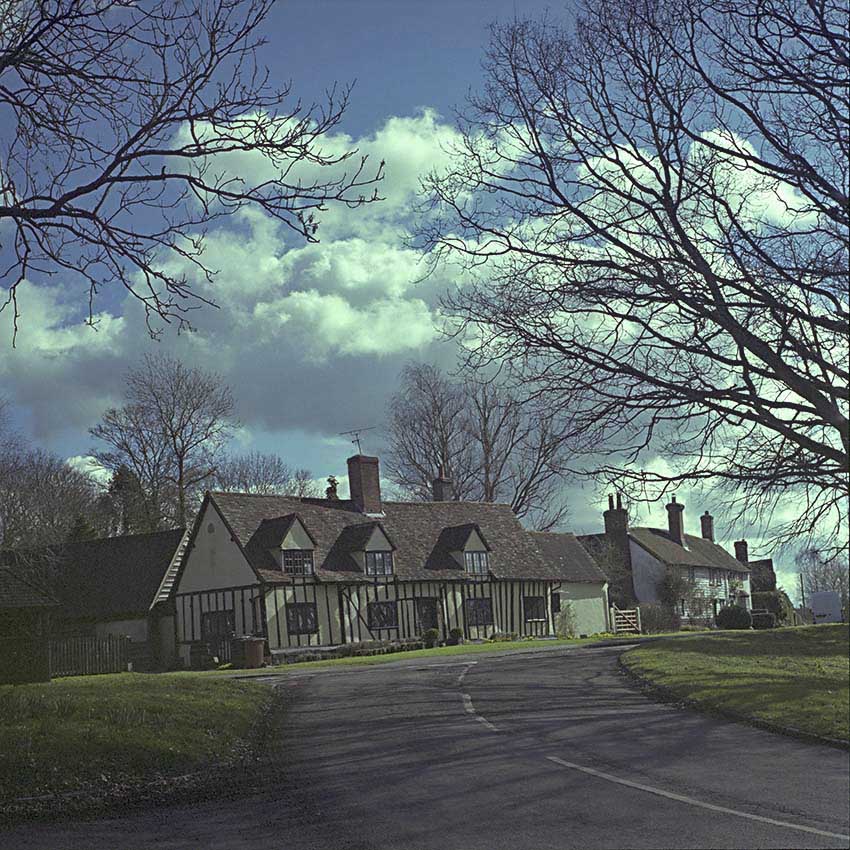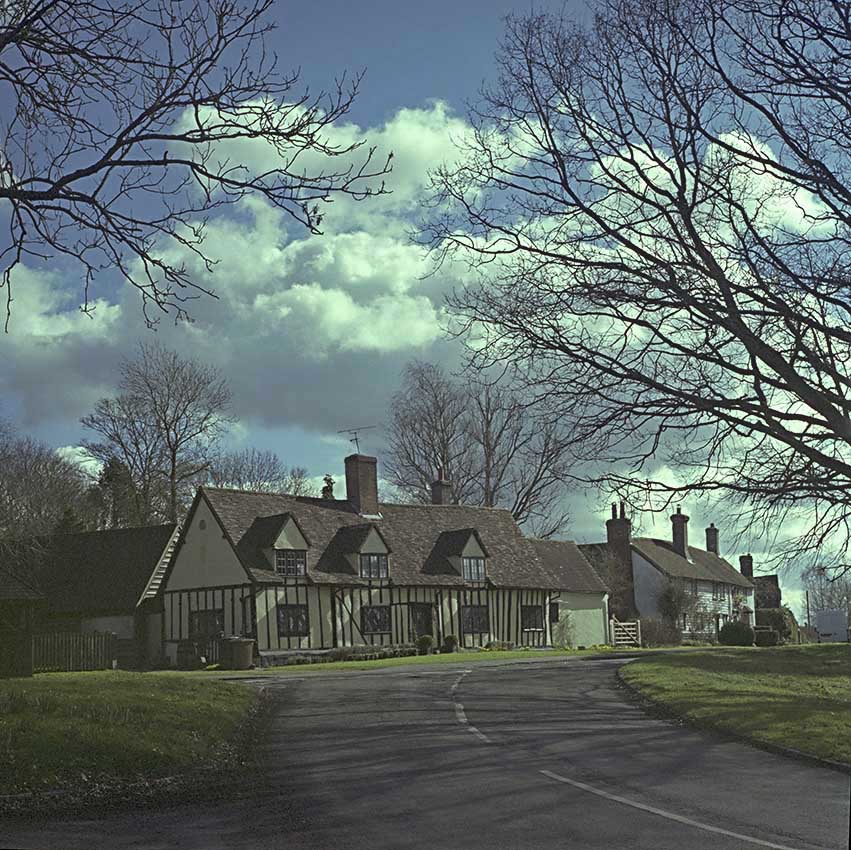Using filters with the
Makro-Kilar / Macro-Zoomatar
There is one further detail about the Makro-Kilar /
Macro-Zoomatar that merits description: provision for the
use of filters with these lenses. We saw above that
Kilfitt drew attention to the fact that the
deeply-recessed front element provided what they called “a
permanent lens shade” – the deep front of the lens.
Looking carefully at the front of the older of the two
examples of the lens shown here, the Kilfitt Makro-Kilar,
we note that just below the front edge of the lens there
is a filter thread. This appears to have a diameter
of 60mm, as far as I can see. Although I am not able
to measure the pitch of the thread, I would imagine that
it will be 0.75, which is the most common thread pitch for
filters of this size. However, if we mount
filters here, right at the front of the lens, we will
lose the benefits of the “permanent
lens shade”, and light from outside the image
area will strike the filter from various angles and may
degrade the image. We would then need to find a way
to shade the filter, most probably by adding a suitable
lens shade. But Kilfitt never marketed a lens shade
for this lens, for they had thought of a better solution!
Let us look again at the Kilfitt Makro-Kilar and the
Zoomar Macro-Zoomatar illustrated above.
|
|
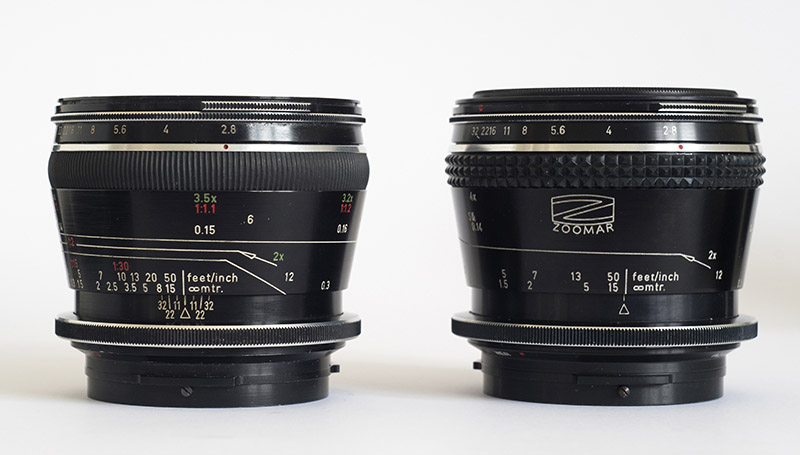
[makrok01.jpg]
There is a tiny difference of detail at the top of the
lenses, as portrayed in this picture. Can you spot
it?
After looking carefully at the two lenses, scroll down
beyond the gap in the page, in order to see it.
Well, here is the answer:
|
|
|
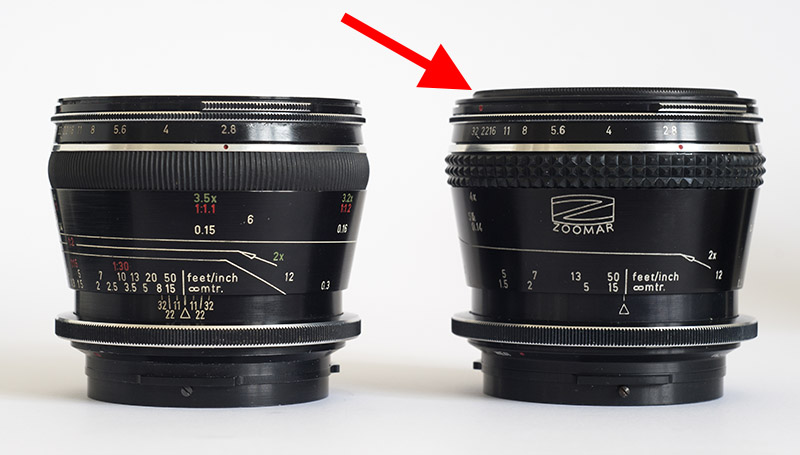
[makrok01a.jpg]
|
|
The difference? There appears to be a “ridge” at
the top of the newer lens. This “ridge”
has a serrated or milled edge, which can mean only one
thing: it is intended to be removed! Unscrewing it,
we find that it was held in place on a 60mm screw thread
near the front of the lens, exactly like the one that we
had noticed on the older Makro-Kilar. When we
withdraw what we have unscrewed, we find that it is
cone-shaped:
|
|
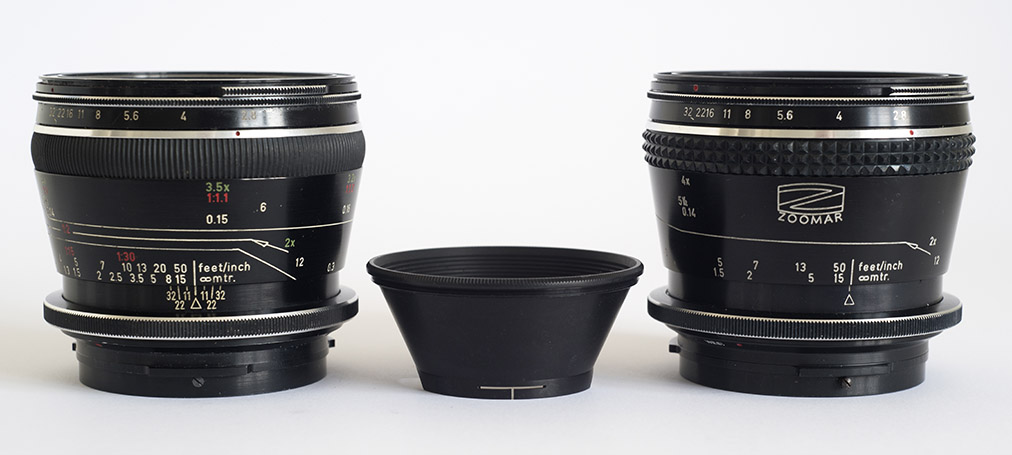
[makrok02.jpg]
|
|
In fact, it screws perfectly
into the older Makro-Kilar, too, and this lens, too, must
originally have been supplied with an equivalent cone
fitted. For some incomprehensible reason best known
to a previous owner, the cone must have been removed and
then lost. Be aware that many Makro-Kilars
and Macro-Zoomatars are sold without this important
cone! What is it for? Let us take
a closer look.
|
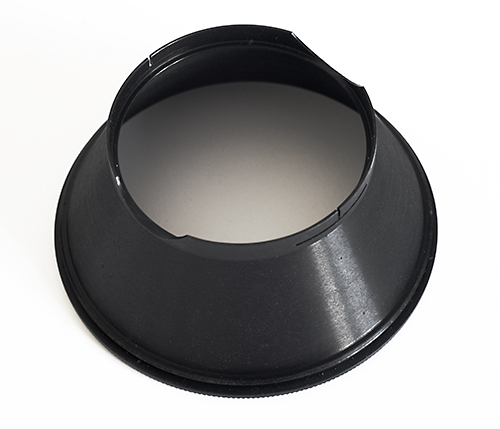
[makrok03.jpg] |
I have here placed the cone
face-down on the table. Near its front, at the
bottom of the image on the left, we can just about see the
thread used to screw it into the lens. But the back
of the cone (the top in this picture) is more
interesting. The final 5mm of the back of the cone
has parallel sides. i.e., this section is
not cone-shaped. About 3mm in from the back there is
a narrow ridge all the way round on the inside. This
ridge is designed to have an unmounted glass filter
placed on it. Slits in opposite sides of
the final 3 or 4 mm (at “North-West” and “South-East”
in this image) create prongs that can be gently squeezed,
if necessary, to hold the filter safely. The image
just above this text also clearly shows two of the
prongs. Scalloped out sections on the other two
opposing sides (at “South-West” and
“North-East” in the image on the left) enable the user to
hold the filter between finger and thumb, to push it in or
pull it out.
The 1950s or 1960s advertisement
for Arnz filters that is reproduced on the right
shows a filter held in a metal ring with similar
prongs that can be slightly bent or squeezed –
either to hold the filter glass more firmly, or to
release it – or to hold the filter ring onto the
lens, since at the time some lenses did not have a
thread at the front, and so filter holders had to
be a push-fit onto the outside diameter of the
front of the lens.
The Kilfitt 90mm Makro-Kilar publicity leaflet
shown above also offers as accessories “Filter
in Gummifassung”, which means “Filter(s) in
rubber mount”. This “mount” was presumably a
thin rubber ring, rather like a rubber band,
around the perimeter of the filter, so that it
would fit in this holder cone without moving or
rattling. I have never seen any such filters
advertised on the internet, but, more than 60
years after they were manufactured, it is highly
probable that the rubber has perished, with parts
of it sticking to the edges of the filter, and
both the filter and the rubber mount have probably
been thrown away.
The same Kilfitt brochure states: “A further and
unique advantage: Filter(s) within the lens
body, protected by the permanent lens
shade. The filters are smaller, lighter
weight and more free from reflections.” (my
translation)
|
|

[arnz_c.jpg]
|
|
|
|
|
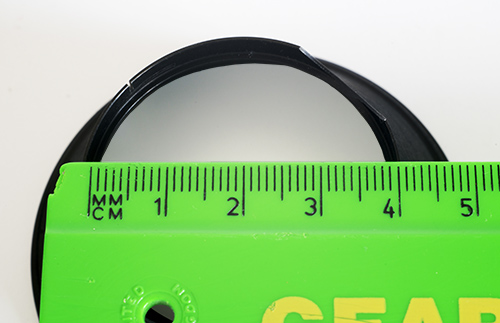
[makrok04.jpg] |
As can be seen in this image, the inside
diameter of the filter-holder section of the cone appears
to be 40 or 41mm. For the hard-pressed photographer
in the 1950s or 1960s, who had just bought an extremely
expensive lens, buying a 40mm or 41mm filter would have
signified a considerable saving, compared with the cost of
a filter in a 60mm mount. Moreover, at the time,
filters of this size were available for many cameras, and
indeed were often sold unmounted, so the photographer may
already have had a suitable filter that had been purchased
for a previous camera.
A Kilfitt brochure received in June 2019
indicates that the filter size is “41mm (series
VI)”. This brochure bears the code
“Summary P 58”, from which I conclude that it was printed
in 1958.
What filter would have been most popular? At
a time before colour photography was widespread, the use
of a yellow filter was common, to darken the sky and bring
out the contrast of the clouds. This effect could be
increased substantially with an orange filter, while a red
filter would render the sky almost black. (For an
introduction to filters, see here.)
In the 21st century, when much photography is in
colour, a polarizing filter is
probably the most popular. Of course, many people
have a UV filter almost permanently on their lens,
principally to protect the front element of the lens from
damage. However, with a front element so deeply
recessed as is the case with the Makro-Kilar /
Macro-Zoomatar, such protection may be considered seldom
necessary, unless one plans to use the lens in sand
storms!
Our congratulations to Heinz Kilfitt and his team
on their attention to this degree of detail! No
wonder the brand was so highly esteemed!
|
|
(As a “P.S”, we
will mention that with the 40mm version of the Makro-Kilar
/ Macro-Zoomatar, which was designed for use with 35mm (“full
frame”) cameras, the same filter-holding cone system was
used, although the dimensions were of course smaller, with
an unmounted filter glass of diameter 30mm being
required. As with the Medium Format lenses featured
here, many of the 40mm Makro-Kilar / Macro-Zoomatar lenses
appear to have lost their cone at some time in the
past. With the 40mm Macro-Zoomatar D that I have,
the cone does not screw into the front of the lens; it clips
into place.)
|
